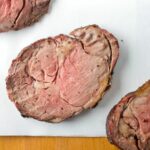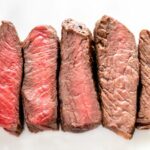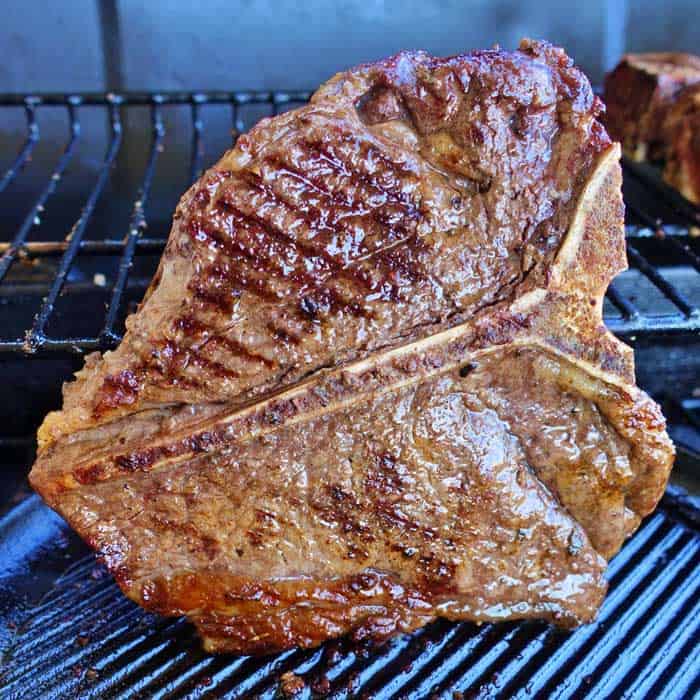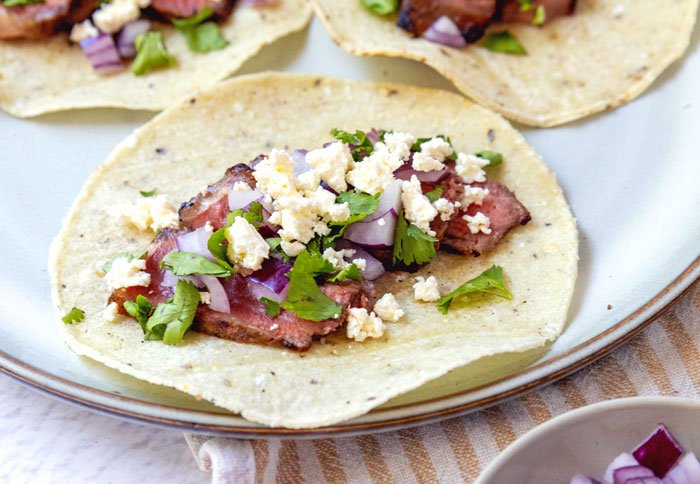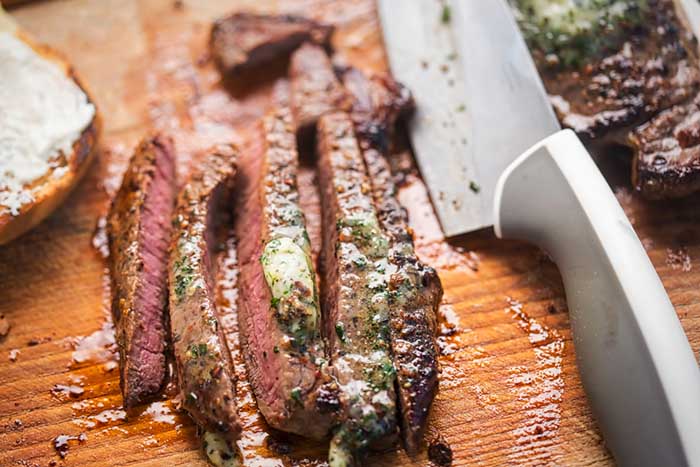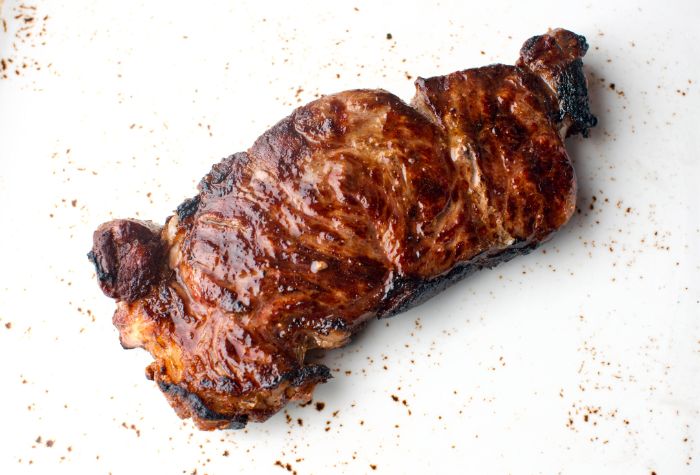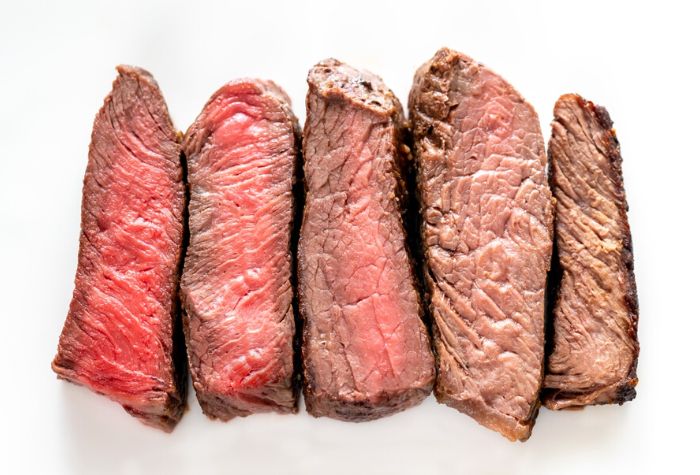Defrost frozen steak quickly and safely with our easy meat thawing guide. From the water bowl technique to avoiding freezer burn, discover how to thaw steaks today.
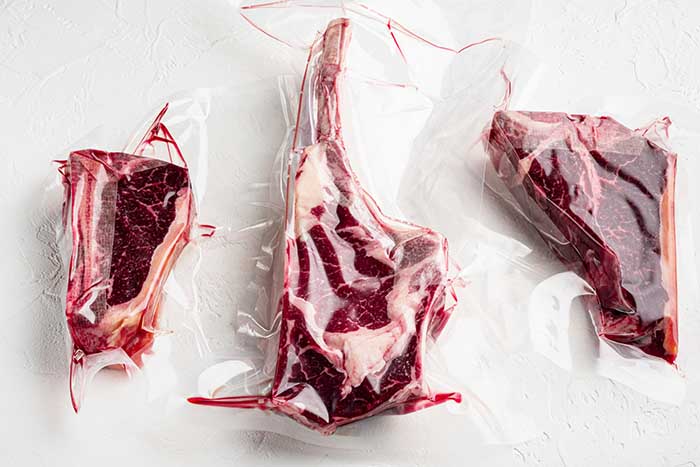
Forgetting to thaw steaks before a big meal is something we’ve all done. Whether you’re planning a grilling feast or a simple weeknight dinner, failing to get the meat out of the freezer can throw a spanner in the works.
The good news is that you need not stress: As long as you know to thaw steak quickly and safely, you’ll have dinner on the grill in no time.
The Best Way to Defrost Steaks
Ideally, you want to defrost your steaks in the fridge for at least 24 -36 hours. That way, they’ll stay at a constant and safe cold temperature while thawing, reducing the risk of developing any harmful bacteria.
Defrosted red meat will keep for 3 to 5 days in the refrigerator before cooking and can actually be frozen again if they don’t get cooked (although you might notice a drop-off in quality).
Cold Water Thawing
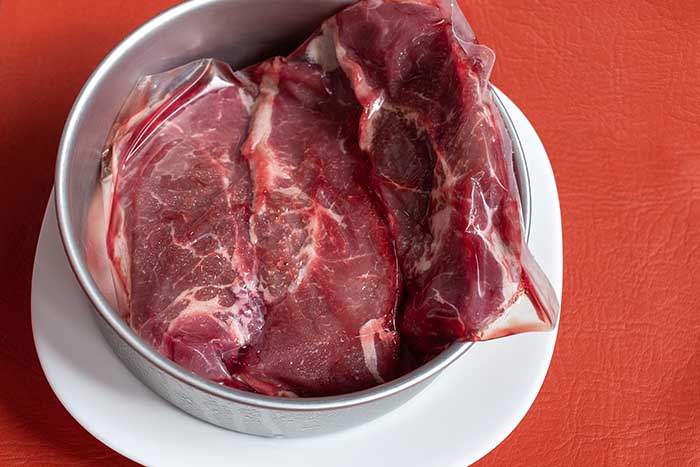
Cold water thawing is a much quicker way of defrosting meats safely, and is approved by the USDA. However, it requires more attention than just leaving them in the fridge.
For cold water thawing, the meat needs to be in a leak-proof container or plastic bag – if the bag or container leaks, bacteria from the air or surrounding area could be introduced to the food, plus the meat could absorb water and affect the texture when cooked.
- Place your steak in a sealable food bag. Take out as much air as possible and cover it in plastic wrap as an extra layer of protection against leaks.
- Put the bag in cold water. Fill a mixing bowl or sink with cold water and submerge your wrapped steak. Thawing takes place as the cold water slowly reaches room temperature, at which point you dump the water out and refill the bowl again with cold tap water.
- Check the meat. You’ll need to replace the water every 30 minutes. Don’t be tempted to try using warm water to speed up the process; warm or hot water will get your steak close to an ‘unsafe’ temperature zone and could result in harmful bacteria forming.
- Cook your steak. You can tell your steak is thawed if it feels soft and fleshy when squeezing between your fingers. If you find any cold or hard spots, it needs more time to defrost. The center of your steak is the part that will take the longest to defrost, so use that as your reference point.
Avoid the Microwave
When time is of the essence in cooking, we often turn to our trusty friend, the microwave. While the microwave is excellent for many things, it should be avoided when defrosting any kind of meat.
Defrosting steaks in the microwave (yes, even if you have a special defrost setting) can cause them to dehydrate and lose their delicious juices resulting in a tough and chewy cut of meat.
Microwaving can also cause hot spots to develop and leave some areas beginning to cook while others are still frozen – meaning that not only will you have a drastically overcooked and chewy steak, but you also have a much higher risk of bacteria developing as some spots have reached the ‘danger’ zone temperature-wise while others are still in the safe or even frozen range.
Can You Cook Steak From Frozen?
If you’re in so much of a pinch time-wise that you have no choice but to cook steak directly from frozen, it is fine and possible to do. You just need to allow more time for it to cook, about 50% longer, as the meat will have to thaw as it cooks.
The easiest way to tell if it’s completely cooked is by checking the internal temperature with a meat thermometer. According to the USDA, beef steak needs to reach a minimum internal temperature of 145°F (63°C) before resting and serving.
So cooking from frozen isn’t bad?
There are plenty of foods, both meat and vegetable, that we cook from frozen (stores wouldn’t sell us frozen food if it couldn’t be done!). But the reason it’s often warned against, especially for meats, is because it can affect the texture if they haven’t been prepared properly for freezing.
Frozen food from the supermarket has usually been blast frozen. Blast freezing is where foods are frozen so quickly that the water molecules inside the cells don’t have a chance to expand, burst, and damage the food.
You see this damage happen most often with frozen vegetables. Vegetables hold a lot of water; when they start to freeze, this water expands and breaks through the cell walls. When it thaws back out, no cell walls keep this water in its place, so it disperses into the surrounding area and we end up with mushy, often tasteless vegetables.
This same process can also happen with meat. If ice crystals are allowed to form, the water molecules that have expanded burst and rupture the fiber structures. When the meat is defrosted, it loses a lot more moisture and liquid from the damaged cells meaning it can be dryer and have a bit less flavor when cooked.
Cooking food from frozen isn’t a bad thing at all; the only time issues tend to arise is when foods haven’t been frozen properly.
Most of us don’t have access to a blast freezer at home, but if you need to freeze meat and have it survive relatively unscathed, it can be done by following a few simple steps.
How to Freeze Steak
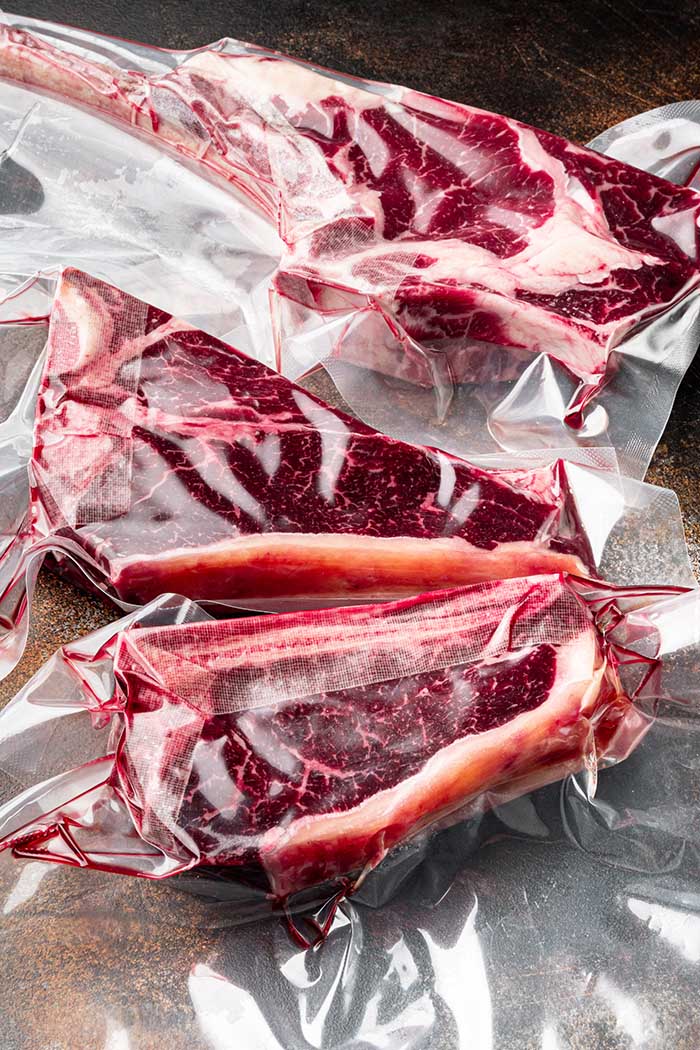
Steak will freeze and last well in the freezer as long as it is prepared and packaged correctly.
How to Wrap Steaks For Freezing
Wrapping steak (or any meat) well before freezing is the most important step to ensuring it keeps well.
- Wrap your steak tightly in at least two layers – we suggest a first layer of plastic wrap and then a second layer of foil or parchment paper.
- Place your wrapped steak inside a plastic freezer bag and remove as much of the air as possible before sealing the top.
- Label the bag with a note of the contents and the date so you can keep track of what needs to be used first.
- Place your steaks in the coldest part of the freezer, usually the bottom draw, and store them as flat as possible. Making sure they are frozen flat just makes it easier to defrost them later.
Avoiding Freezer Burn
There’s nothing worse than pulling something out to defrost or cook and realizing it’s got freezer burn. While freezer burn doesn’t make something unsafe to eat, it can affect the taste and texture of cooked food, so it’s best to avoid it whenever possible.
What is Freezer Burn?
Freezer burn is where ice crystals ‘migrate’ to the surface of the food that has been in the freezer for a prolonged period of time.
The ice comes from the moisture in your food. If it migrates to the surface of the food, it can evaporate (it’s actually a process called sublimation, but for the sake of keeping things simple, it’s very similar to the process of evaporation). That evaporation causes dehydration, which results in the white ‘scorch’ marks left by freezer burn and can make foods dry and affect the flavor.
How to Stop Freezer Burn
To prevent freezer burn, ensure meat is well wrapped and stored in a sealable plastic food bag with as much air removed as possible before freezing. The less air that can get to the food, the less chance there is for any moisture to evaporate (sublimate) and cause the freezer burn reaction.
Consider a Vaccum Sealer
If you have a lot of meat to freeze and want to make sure it keeps as fresh and free from freezer burn as possible, it could be worth purchasing a vacuum sealing machine.
They are very affordable to buy (like this Mueller vacuum sealer), and generic replacement bags can be bought in rolls for all sizes (like this roll on Amazon)
They are also simple to use – You place raw meat into a vacuum-safe bag, place the open top into the machine, and it mechanically removes all the air from the bag before creating an air-tight seal with a heating element.
FAQ
How Long Can Steak Keep in the Freezer?
Ideally, you should aim to use it within six months of freezing, but it can keep for up to a year in the freezer if packaged and stored correctly.
